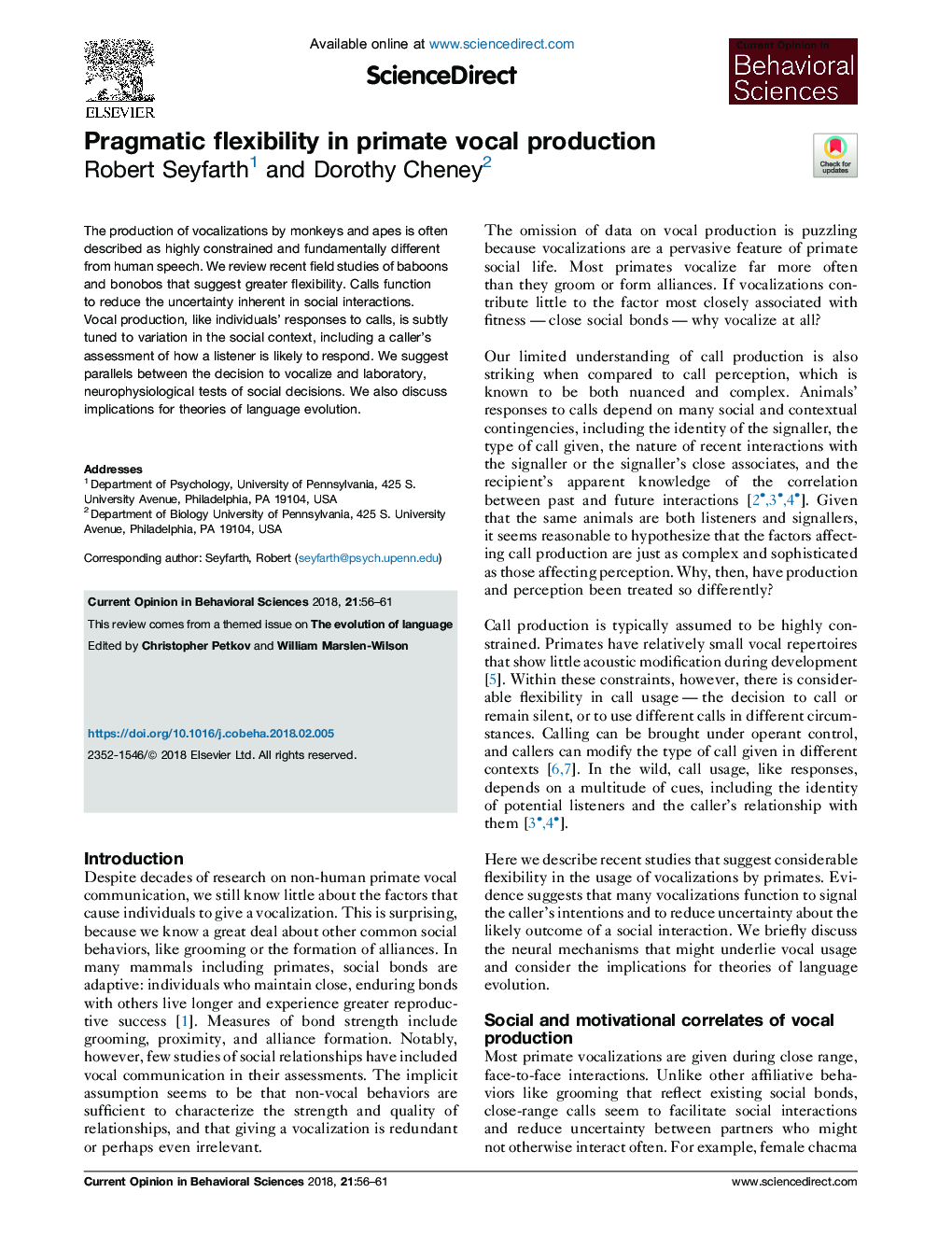| Article ID | Journal | Published Year | Pages | File Type |
|---|---|---|---|---|
| 8838124 | Current Opinion in Behavioral Sciences | 2018 | 6 Pages |
Abstract
The production of vocalizations by monkeys and apes is often described as highly constrained and fundamentally different from human speech. We review recent field studies of baboons and bonobos that suggest greater flexibility. Calls function to reduce the uncertainty inherent in social interactions. Vocal production, like individuals' responses to calls, is subtly tuned to variation in the social context, including a caller's assessment of how a listener is likely to respond. We suggest parallels between the decision to vocalize and laboratory, neurophysiological tests of social decisions. We also discuss implications for theories of language evolution.
Related Topics
Life Sciences
Neuroscience
Behavioral Neuroscience
Authors
Robert Seyfarth, Dorothy Cheney,
